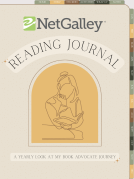
The Path to War
How the First World War Created Modern America
by Michael S. Neiberg
This title was previously available on NetGalley and is now archived.
Buy on Amazon
Buy on Waterstones
*This page contains affiliate links, so we may earn a small commission when you make a purchase through links on our site at no additional cost to you.
Send NetGalley books directly to your Kindle or Kindle app
1
To read on a Kindle or Kindle app, please add kindle@netgalley.com as an approved email address to receive files in your Amazon account. Click here for step-by-step instructions.
2
Also find your Kindle email address within your Amazon account, and enter it here.
Pub Date 3 Oct 2016 | Archive Date 3 Oct 2016
Description
On April 2, 1917, the United States declared war against Germany, entering the conflict that for years had been tearing Europe apart for three years as Americans looked on in sympathy and disbelief. President Woodrow Wilson's speech to Congress marked the end of one era in the nation's history and the start of another. World War One had generated lively domestic debate as to what America's role should be. Wilson had been re-elected in 1916 by pledging to stay out of the conflict in Europe; the immensely popular former president Theodore Roosevelt was convinced that getting in offered the United States the means to take its destined place as a world power.
In The Path to War, Michael S. Neiberg reveals how choosing to enter World War One defined the country in nearly every way possible. Getting to the crucial moment involved a sometimes tortured and often contradictory process, as Americans hoped to keep to the moral high ground, condemning German aggression while withholding from the Allies active support, offering to mediate between the belligerents while keeping clear. He follows American reaction to such events as the sinking of the Lusitania, German terrorism, and the incriminating Zimmermann telegram, shedding light on the dilemmas and crises the country faced in the war years, moving gradually from ambivalence to hesitation to determination. By the time George M. Cohan composed "Over There," one of the most popular and enduring songs of the 20th century, in the spring of 1917, the vast majority of Americans, "hyphenated" or otherwise, were ready to go.
The Path to War revives debates around America's entry into World War One, building to declaration while examining the forces that made it all but inevitable. Neiberg establishes beyond question that the war was not some parenthetical exception in American history but a moment of national determination, one whose effects still resonate today.
In The Path to War, Michael S. Neiberg reveals how choosing to enter World War One defined the country in nearly every way possible. Getting to the crucial moment involved a sometimes tortured and often contradictory process, as Americans hoped to keep to the moral high ground, condemning German aggression while withholding from the Allies active support, offering to mediate between the belligerents while keeping clear. He follows American reaction to such events as the sinking of the Lusitania, German terrorism, and the incriminating Zimmermann telegram, shedding light on the dilemmas and crises the country faced in the war years, moving gradually from ambivalence to hesitation to determination. By the time George M. Cohan composed "Over There," one of the most popular and enduring songs of the 20th century, in the spring of 1917, the vast majority of Americans, "hyphenated" or otherwise, were ready to go.
The Path to War revives debates around America's entry into World War One, building to declaration while examining the forces that made it all but inevitable. Neiberg establishes beyond question that the war was not some parenthetical exception in American history but a moment of national determination, one whose effects still resonate today.
Available Editions
| EDITION | Hardcover |
| ISBN | 9780190464967 |
| PRICE | US$29.95 (USD) |




